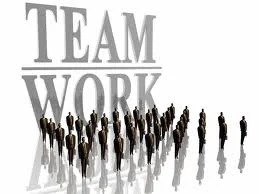Growing Customers
Growing Customers
The father of modern management, Peter Drucker, said it best many years ago when he proclaimed that the sole purpose of any business is to create and grow the customer base. Revenues for any business can be tracked to a customer decision. Yet it is amazing how many organizations spend an inordinate amount of time exploring financial manipulations to increase profits rather than digging into the bigger idea of growing business with existing and new customers. The most important customers for any business are the current ones. These customers are always looking for innovative ideas and solutions that bring higher value to their lives.
Who Is Your Customer?
Your Consumer
Your Customer
Let's begin with a very important distinction. There are consumers, customers, distributors, inventors, franchisees, and many other constituencies that interact with any business. For example, a very busy student may be your consumer, who purchased your product from a Target store, that received shipment from a national distributor. In this situation, your Company should ensure that there is a sound consumer proposition that creates demand for your product. Hopefully, this involves a solid brand building platform that is well positioned in the marketplace. However, this unto itself will not ensure success. Your firm must also ensure availability of your product by securing retail space, merchandising, terms and conditions with the Target store buyer.
In the automobile business, the manufacturer (franchisor) builds, distributes and markets the vehicle portfolio while the dealers (franchisees) are responsible for local representation including locations, inventory, sales, service, and parts support. In this example it might be tempting to treat the dealer network as customers when in reality this would be a disservice to the entire system. Ultimately, the consumer is the person who walks into a local agency and chooses to make the purchase.
Therefore, defining your target customer base and harmonizing the consumer/customer/distributor roles and responsibilities becomes a very strategic process with coordinated actions and consequences.
The Consumer Proposition
Purpose + Profits + Passion
Without a winning consumer proposition, good luck with the customer strategy. There is only one possible approach and that is low price which is an indefensible long-term strategy. It behooves every manufacturer to begin with the end-user and engineer back from this starting position. What gap does your product or service fill? How is your product uniquely different and special compared with the competition. When there is strong consumer pull, the customer push becomes more natural. Brands that connect on an emotional basis create a lasting bond with consumers. TOM'S Shoes is a classic example that has become a great story of purpose, profits, and passion. Today, due to the consumer demand, consumers can find TOM'S Shoes in Whole Foods, Nordstrom, and other retail establishments.
The Customer Proposition
Cooperate with Customers to Create Win-Win Solutions
Gaining the trust and respect of your customer base is a long-term commitment. Too often, an old-school salesperson spends a disproportionate amount of time trying to use personal influence to gain customer availability. This may come through social outings, special terms and conditions, or trial offers. This can manifest itself in a one sided goal of selling their product to a retailer rather than helping solve a problem for the retailer. Cooperation, joint solutions, and partnerships create the Win-Win environment where all parties are focused on the needs of the shopper and consumer. This is where shopper marketing insights, space allocations, merchandising standards, must be developed through a collaborative process.
This is a new skill for many customer facing teams and must be a commitment from the executive levels of any organization. Investing in your customer strategies, cross-functional team and capabilities will ensure a healthier work environment between manufacturer and retailer. When both parties are focused on the needs of the consumer first, the customer bundle of goods and services can be configured in the optimal manner.
Creating a winning customer growth strategy incorporates a comprehensive approach that begins with the needs of the customer and how the client could address these needs. Often a tweak of the existing products and services can make a major impact on the customer growth trajectory. Other times, it is necessary to fully revamp the end-to-end customer management process within the client's organization. This would involve customer segmentation with statistical analysis of sources of volume and value. The result frequently leads to a revitalized talent development program that equips customer teams to create and capture greater value.
JSW Consulting, LLC, collaborates with clients to grow their customer base and profitability. Whether a business-to-business (B2B) customer relationship or a direct consumer business model, any organization should regularly identify gaps in their customer offering and bring new elements to market. Fundamental to this process is the guiding principle that a Win-Win partnership between your customer and your firm must always be the goal.




